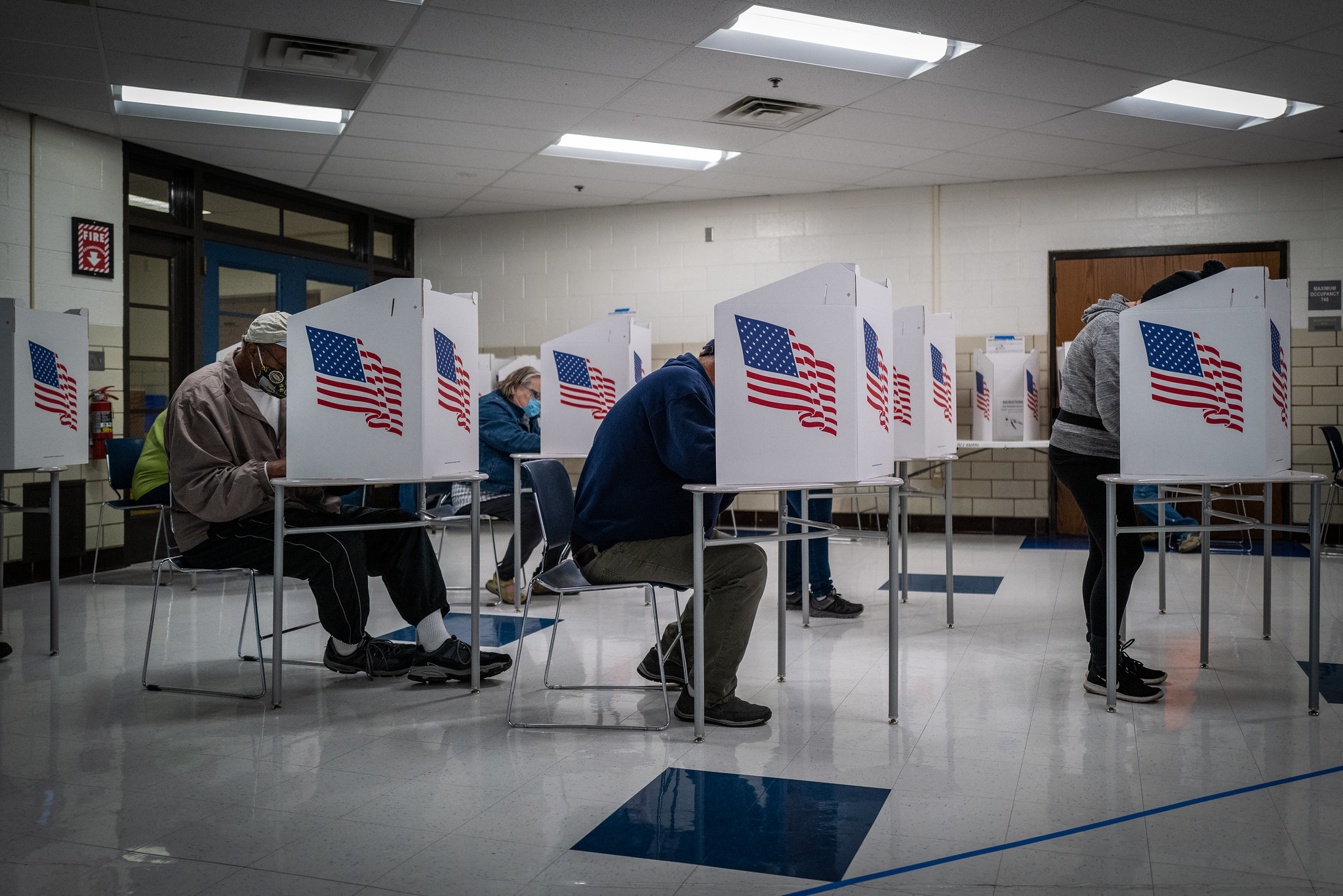Here’s What Electoral Count Act Reform Should Look Like
Congress should remedy dangerous weaknesses in the ECA that invite uncertainty as to the various roles that state and federal actors, as well as the different branches of government, play in the process.

Published by The Lawfare Institute
in Cooperation With

People across the political spectrum (including a majority of voters) agree that the United States’ process for electing presidents is flawed. The rules meant to ensure peaceful transitions of power are unnecessarily vulnerable to misunderstanding or worse. Events on and around Jan. 6, 2021, including attempts to disrupt the final stage of the presidential election, brought into stark relief the extent to which unclear and untested law can create space for confusion and chaos. Fortunately, members of Congress of both parties have recognized this problem. To solve it, they are now working on reforming the statute that governs the casting and counting of electoral votes for president and vice president every four years.
The Electoral Count Act of 1887 (ECA) suffers from a number of now well-documented problems, stemming largely from vague and antiquated language. But the basic intent behind the statute—including the allocation of authority and responsibility between state and federal actors—remains as relevant today as when the statute was drafted in response to the fiercely contested Hayes-Tilden election of 1876. Following that election, Congress was presented with competing submissions of electoral votes from several states and had no rules or procedures in place to determine which votes it should count. The ECA was meant to fill that gap. But it left a number of questions either unresolved or answered by labyrinthine language. (For an explanation of the history behind the law and its ambiguities, read this explainer by the National Task Force on Election Crises.)
As momentum in favor of updating the ECA grows, there is some concern that Congress may shy away from comprehensive reform and instead tackle only the most obvious flaws in the law. That would be a missed opportunity. Congress can and should remain faithful to the original purpose of the statute (and the Constitution) while also remedying dangerous weaknesses in the ECA that invite uncertainty as to the various roles that state and federal actors, as well as the different branches of government, play in the process. It can do so by addressing five key aspects of the law on which there seems to be a fair amount of consensus across the ideological spectrum.
Narrowing the Concept of “Failed” Elections
The ECA provides that if a state has held an election but somehow “failed to make a choice” on Election Day, then the state legislature may choose the manner of appointing electors on a subsequent day. (A version of this provision dates back to the Presidential Election Day Act of 1845 and thus preceded the ECA. But it is now included in Title 3 of the U.S. Code alongside the ECA and, given the linkages between the statutes, should be updated along with the ECA.) This provision was meant to accommodate run-off elections and extreme weather conditions that sometimes prevented the completion of elections on a single day. It was not meant to provide an opening for politicians to reject election results or override the will of the voters. But the language is vague, and, importantly, the statute itself does not define what it means for an election to “fail.” Accordingly, some partisan actors have wrongly suggested that delays in counting votes or disputes about how an election was conducted can form the basis of a “failure” that would justify state legislatures appointing electors themselves after Election Day. That argument is inconsistent with the history and intent behind the ECA, as well as its other provisions.
Nevertheless, a revised ECA should define (or replace) the concept of “failure” and make clear that this provision, which essentially allows for the selection of electors after Election Day, applies only under a narrow set of extreme circumstances, such as a major natural disaster or terrorist attack. And if this provision is triggered, at a minimum, states should be required to stick with their previous choices as to the manner of appointing electors.
Incentivizing and Respecting State Determinations
The ECA can do more to ensure that timely state determinations of election results are respected in Congress. That includes honoring state procedures designed to resolve disputes over the outcome.
Under Article II of the Constitution and the 12th Amendment, states conduct presidential elections and submit the results to Congress to be counted. Congress’s limited role is to ensure that the submissions it receives from the states are authentic, in that they reflect the actual outcome of those elections consistent with state and federal law. The ECA’s “safe harbor” provision was intended to accomplish this. It provides that when a state finally resolves disputes pursuant to laws in place prior to Election Day, and does so by a certain date, the state’s final determination must be treated as “conclusive” by Congress—meaning Congress cannot second-guess the state’s election results or otherwise look behind the returns. But the statute does not include any enforcement mechanism to ensure Congress respects that promise. And vague terms in the ECA allowing Congress to reject electoral appointments as not “lawfully certified” or to reject electoral votes as not “regularly given” have been misunderstood (at best) by some members of Congress to justify objecting to state results.
Congress should ensure that courts can intervene if, for example, state actors go “rogue” and purport to certify results that do not reflect the outcome of the election. But it is not for Congress to second-guess how the states conducted their elections. A revised ECA should clarify these respective roles of the states, Congress and the courts. The law should create stronger incentives for states to submit timely, lawful certifications of their election results, and it should constrain attempts by Congress to overturn any state’s certified election results.
Clarifying the Role of the Vice President
The 12th Amendment provides that appointed electors must send certificates of their votes for president and vice president to the president of the Senate (usually the vice president). But with respect to his or her role during the count, the 12th Amendment says only that “[t]he President of the Senate shall, in the presence of the Senate and House of Representatives, open all the certificates and the votes shall then be counted.” The ECA gives more detailed guidance, designating the president of the Senate as the presiding officer when Congress meets to count electoral votes on January 6. The statute assigns the presiding officer specific duties, such as “preserving order,” calling for objections and announcing the results.
But, contrary to what some have recently tried to argue, neither the 12th Amendment nor the ECA contemplates a role for the vice president—or any other presiding officer—that involves making substantive decisions about which electoral votes to count. The ECA should be updated to make unmistakably clear that the president of the Senate has a limited, largely ceremonial role in the process of counting electoral votes.
Reining in Objections
The ECA allows for objections to Congress’s counting of a state’s electoral votes as long as those objections are made in writing and signed by one senator and one representative. It should not be so easy for members of Congress to disrupt or undermine the counting process by objecting either to a state’s appointment of electors (in essence, its certified election results) or to individual electoral votes. The number of members required to lodge a cognizable objection should be substantially higher.
In addition, the grounds on which members of Congress may make or sustain objections to an elector’s appointment or vote should be narrow and clear. The ECA currently allows for objections that an appointment of electors was not “lawfully certified” or that an electoral vote was not “regularly given.” (Note an important difference there—the term “regularly given” applies to the conduct of electors after they are appointed and not, as members of both parties have suggested, to preappointment controversies over the conduct of elections.) But those terms are undefined, and the language of the statute overall is muddled. An updated ECA should instead clearly enumerate an exhaustive list of appropriate grounds for objections to either appointments or votes that are consistent with Congress’s role in counting—but not second-guessing—states’ electoral votes.
With respect to the appointment of electors, the grounds for objection should be limited to the authenticity of a state’s submission—as noted above, whether it reflects the actual outcome of a state’s election consistent with state and federal law (for example, members of Congress should be able to object if electors are appointed in defiance of a court order)—and the constitutional eligibility of individual appointed electors. With respect to electoral votes, the grounds for objection should be limited to the validity of a vote under applicable law and constitutional rules, and narrow circumstances in which votes are the result of bribery or other unlawful influence.
Establishing Clear Dispute Resolution
Updating the ECA as described above should make it unlikely that there will be a genuine dispute in Congress as to the counting of electoral votes. But such disputes are not impossible, and there is reason to be concerned, after the 2020 election laid bare the statute’s many weaknesses, that partisan actors will again attempt to exploit those weaknesses.
If all else fails, it should be absolutely clear what happens if there is a dispute within Congress as to the counting of electoral votes. If the Senate and the House of Representatives disagree on whether to count one or more electoral votes, there should be no doubt as to which votes are ultimately counted—and therefore, in the most extreme scenario, which candidate has been elected president. Whatever mechanism Congress chooses to resolve such disputes, the final outcome must not be obscured as it is now by convoluted statutory language.
Conclusion
There are additional clarifications and improvements that Congress should consider. One is to push back the meeting of electors and build in more time for the resolution of disputes. Another would be to specify how a “majority” of appointed electors (a crucial constitutional threshold) is defined and calculated when some electoral votes have been tossed out. But a comprehensive update to the ECA should, at a minimum, address the above five key aspects of the law. Each is a piece of the puzzle, necessary to a coherent, effective whole.
Congress must reach beyond the ECA’s most obvious weaknesses and instead tackle comprehensive ECA reform with each of these five critical pieces in mind. Recent events at home and abroad offer a stark reminder that democracy is fragile. So when given an opportunity to safeguard American democracy, Congress should seize it.





